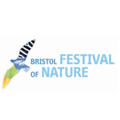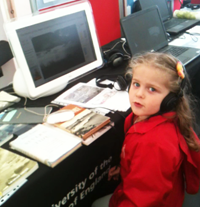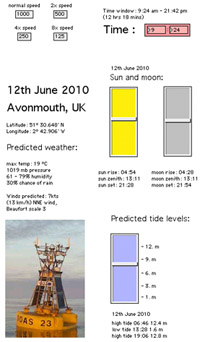Soundscapes, sonifications and compositions by staff & students at UWE and CCRI
Who is Sonic Severn?
Sonic Severn has been developed by Michaela Palmer and Owain Jones, an interdisciplinary research team at the University of the West of England, UK. Michaela and Owain work on the sonification of the extraordinary tidal rhythms of the Severn Estuary, in order to bring to public and political attention the very rich ecological and cultural heritages of this estuary, as well as the threats it faces.
 Michaela is an Artist and Senior Lecturer in Digital Media. Her research interest span across play and interaction, physical (sensor-based) computing, sonification of complex processes, generative art and music, installation art, web design as well as multimedia authoring.
Michaela is an Artist and Senior Lecturer in Digital Media. Her research interest span across play and interaction, physical (sensor-based) computing, sonification of complex processes, generative art and music, installation art, web design as well as multimedia authoring.
In 2010, Michaela completed her PhD 'Listening to the Mind at Play - Sonified Biofeedback as Generative Art Practice and Theory' (London Metropolitan University). With The Breath of the Moon and Sonic Severn, she continues to create sonic artefacts with a focus on generative and natural processes.
 Owain is a Reader in Cultural Geography: landscape, place and environment at the Countryside & Community Research Institute. His research interests are in rural communities and rural childhood; landscape, place and nature; landscape, place and memory; tidal geographies; flooding history and community resilience; sustainable food chains.
Owain is a Reader in Cultural Geography: landscape, place and environment at the Countryside & Community Research Institute. His research interests are in rural communities and rural childhood; landscape, place and nature; landscape, place and memory; tidal geographies; flooding history and community resilience; sustainable food chains.
Owain has over ten years of post-doctoral research experience funded by the UK's Economic and Social Research Council, the Arts and Humanities Research Council and the RCUK Rural Economy and Land Use Programme. His publications can be found here. He is also Chair of the Royal Geographical Society Research Group on Children, Youth and Families; Associate Editor of the Journal of Children’s Geographies, and on the Committee of the Social and Cultural Geography Research Group.
How did Sonic Severn come about?
Many fascinating phenomena can be observed in the Severn Estuary, for example that it has the highest tidal range in Europe; the second highest in the world. At the very highest tides the sea level will rise by as much as 14.5 metres in over 5.5 hours, that is 3x the height of a double-decker bus.
 With current environmental pressures,the Severn Estuary phenomena deserve great public attention, and so in 2010 Michaela and Owain built a first software application (The Breath of the Moon) that translated some of the tidal predictions for the Avonmouth port into sound. This artefact was exhibited at the Bristol Festival of Nature where it was very well received by the public.
With current environmental pressures,the Severn Estuary phenomena deserve great public attention, and so in 2010 Michaela and Owain built a first software application (The Breath of the Moon) that translated some of the tidal predictions for the Avonmouth port into sound. This artefact was exhibited at the Bristol Festival of Nature where it was very well received by the public.
In the next phase of the project, Michaela and Owain invited other sound artists and composers to contribute to the site, which lead to the addition of the Severn sounds and the Weather sounds pages.
Purpose of the site
Sonic Severn is an open invitation to everyone who lives in or cares for the Severn Estuary to listen and discover the rhythms of this rich intertidal landscape. There are so many unique tide-specific phenomena and rhythms that deserve public awareness that it could easily take a life-time of listening, researching and composing to make them all heard.
 Plans are underway to expand the sonic map by involving
local schools, environmental trusts, as well as interested individuals
in this work. If you would like to get involved, or would like more information, please contact Michaela Palmer.
Plans are underway to expand the sonic map by involving
local schools, environmental trusts, as well as interested individuals
in this work. If you would like to get involved, or would like more information, please contact Michaela Palmer.
We also welcome submissions of sound compositions that have been generated from the natural and/or man-made processes occurring in the Severn Estuary. These may include tidal phenomena, weather phenomena, patterns of animal migrations, human traffic and/or industrial processes. Most of these processes are interlinked, and in many cases even dependent on the intertidal rhythms that make the Severn Estuary.
How were the sounds on this site composed?
The sounds were composed in a number of different ways:
- By going on a site visit to record the sound of a particular environmental phenomenon in the best possible way (editing as little as possible, focusing on best playback experience).
- By going on a site visit to record particular environmental sounds and then arranging them in such a way that they clearly reveal to the listener the phenomenon in question (a perceptive reconstruction).
- By using publically available data for the Severn Estuary (weather data, tide tables, sun and moon tables, statistics about bird migrations, port data, etc.) as the basis for a composition. The data could be used to either drive a real-time composition (a data sonification), or to drive a sound composition that is defined by the patterns and rhythms of these phenomena in other ways. In any case, the finished composition should be able to reveal some of the typical intertidal patterns and rhythms.
- By using a mix of these compositional techniques.
What are soundscapes and sonifications?
Soundscapes and sonifications are different kinds of sound artefacts. Soundscapes are artefacts that create the impression of being within a particular environment. Soundscapes can refer to both natural as well as man-made sounds and can be put together using musical composition, sound design and/or field recordings.
 Sonification is the use of sound to communicate information that is based on data. It is particularly useful for situations where a constant monitoring of data is required but a visual display may be distracting. For instance in an operating theatre it may be more useful to hear an audio stream of the patient's vital body functions instead of having to check for these on a screen.
Sonification is the use of sound to communicate information that is based on data. It is particularly useful for situations where a constant monitoring of data is required but a visual display may be distracting. For instance in an operating theatre it may be more useful to hear an audio stream of the patient's vital body functions instead of having to check for these on a screen.
In the context of the Severn Estuary, sonification can be a helpful method to communicate a whole range of information: real-time tidal and weather data, positions of ships and buoys in the estuary, biological data of migration of species, traffic crossing the Severn Estuary by boat, train or road, release of waste products into the Severn Estuary, water and air quality, archaeological data, or geological changes.
In The Breath of the Moon, the sonification concentrated on the rising and falling of the tide at Avonmouth docks on the 12th June 2010. This particular tide was chosen not only because it coincided with a new moon (generating a very high tide), but also because it coincided with the Bristol Festival of Nature. It was hoped that festival visitors would be able to relate what they heard to real tidal movements taking place in the estuary, and obtain an understanding for the 'living' landscape that is the Severn Estuary.
About Us
Who is Sonic Severn?
How did Sonic Severn come about and what is its main purpose?
How were the sounds on this site composed?
What are soundscapes and sonifications?